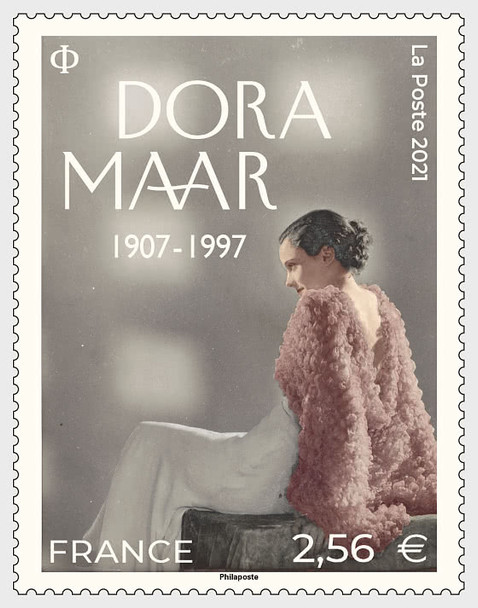Description
"Picasso’s legendary muse, Dora Maar inspired the artist to some of her masterpieces. But she was also a unique artist, photographer and painter.
Originally Croatian through her father, an architect, French through her mother, Henriette Théodora Markovitch (Paris, 1907-1997) spent her youth in Buenos Aires. Back in Paris, she studied painting at the Académie Julian and attended the School of Photography. Adopting the pseudonym of Dora Maar in the late 1920s, she established herself as a photographer. Politically committed to the left, she denounces social misery in striking pictures, taken in the poor neighborhoods of London, Paris or Barcelona.
Associated with photographer and cinema decorator Pierre Kéfer, she opened her studio. Working for advertising and fashion, producing portraits and nudes, Dora Maar asserts her dreamlike inclination. From 1933, she approached the surrealists. His terrifying Portrait of Ubu, a photograph of an armadillo fetus, his photomontages of great formal perfection draw their disturbing strangeness from reality.
A painter, she emerges from Picasso's grip and after the war creates still lifes, then landscapes that will lead her to the confines of abstraction. In the years 1970-80, his scratched negatives and his “drawings of light” reconciled painting and photography in the same gesture.
Preserved with some 1,000 photographs of the artist at the Center Pompidou, this work was undoubtedly produced for a beauty magazine. To the "glamor" imposed by the order is added the audacity of the background, crisscrossed by a play of shadow. The contrasting lighting of the mannequin recalls Dora Maar's closeness to the world of cinema. In 1935, Jean Renoir hired him as a still photographer for his film The Crime of Monsieur Lange."







